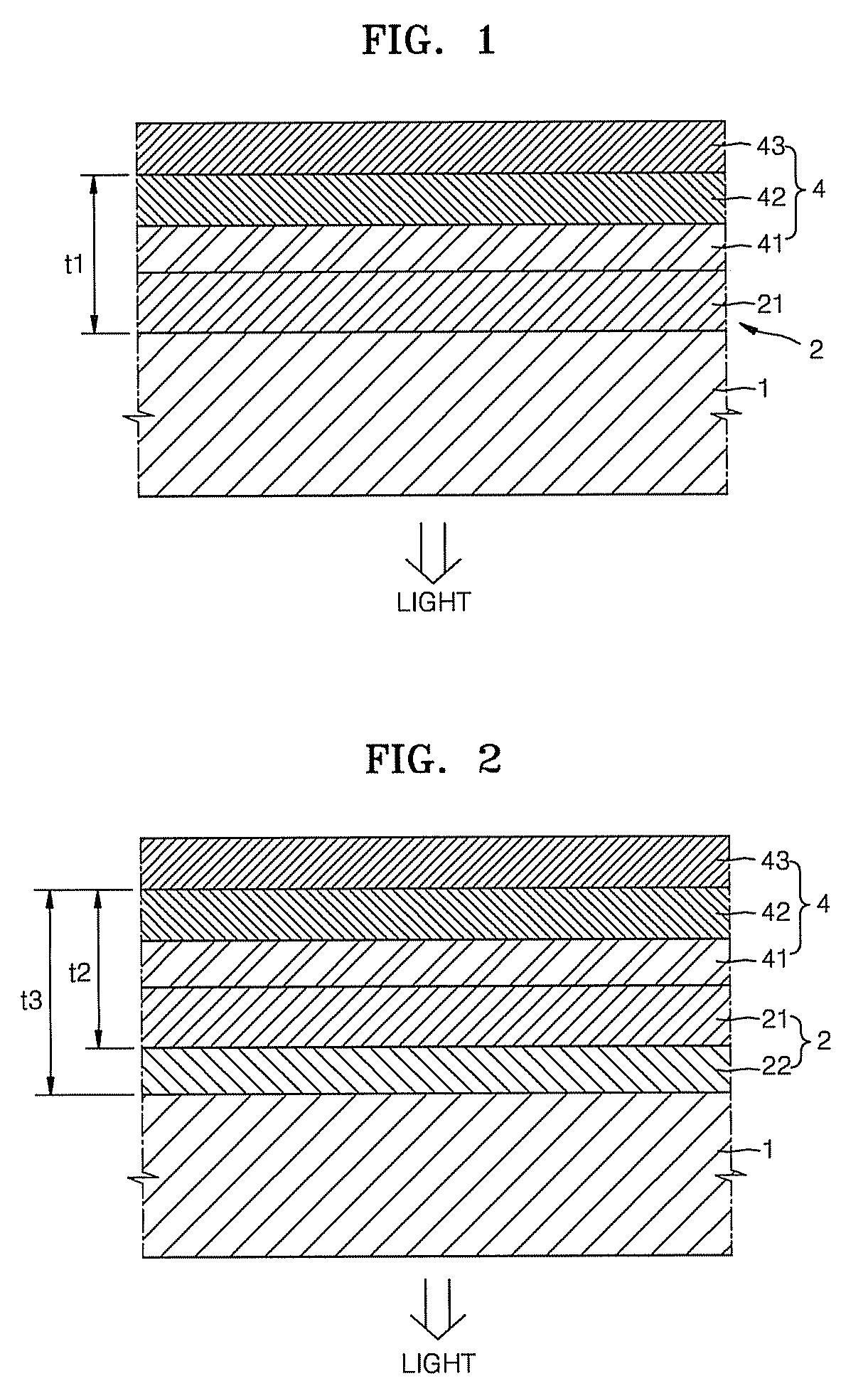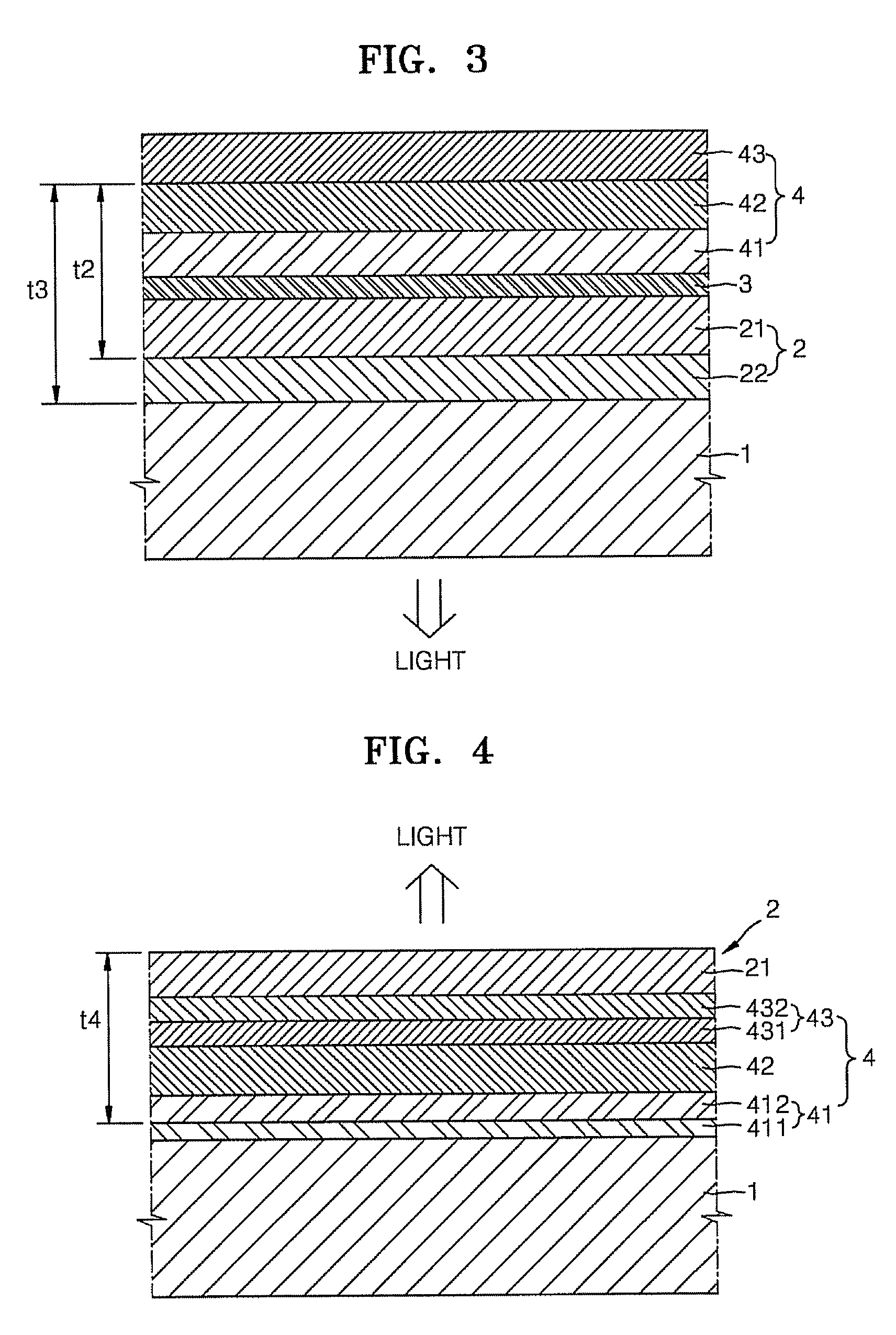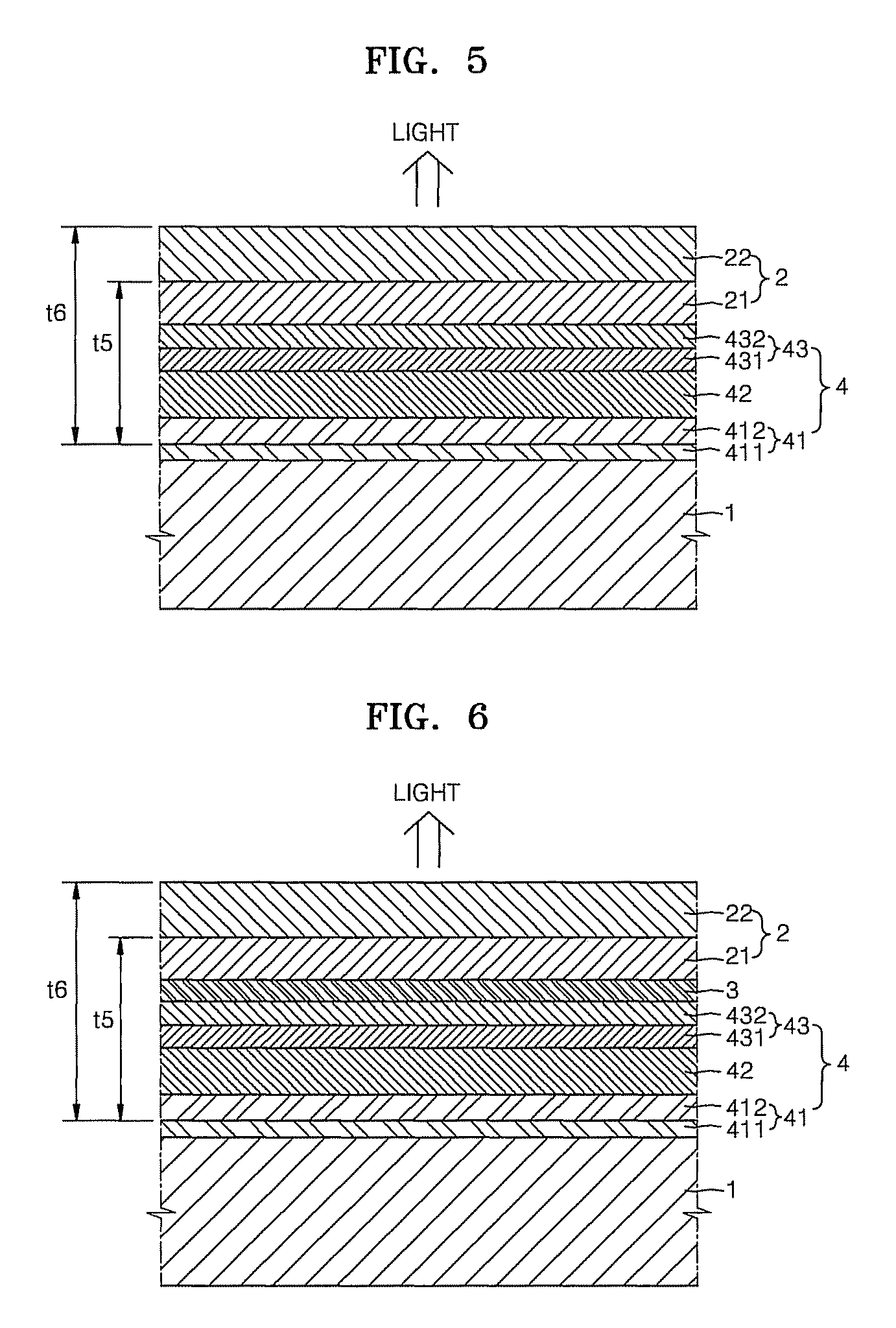Light-emitting device
a light-emitting device and light-emitting technology, which is applied in the direction of discharge tube/lamp details, natural mineral layered products, group 4/14 element organic compounds, etc., can solve the problems of complicated manufacturing process lower light coupling efficiency of organic light-emitting devices, and cathode ray tubes, etc., to improve light coupling efficiency, improve the effect of color purity, and improve the optical resonance layer
- Summary
- Abstract
- Description
- Claims
- Application Information
AI Technical Summary
Benefits of technology
Problems solved by technology
Method used
Image
Examples
synthesis example 1
[0095]8.865 g of methyl trimethoxysilane (MTMS) and 3.406 g of bis(triethoxysilyl)ethane (BTESE) (the molar ratio of MTMS to BTESE was 5:5) were dissolved in 26.831 g of THF, used as a solvent, and a diluted solution, of 0.75 ml of 2N HCl in 8.31 g of water as a catalyst, was gradually added thereto. The concentration of the monomers MTMS and BTESE was adjusted to 30 wt %, and the total amount of the monomers MTMS and BTESE was adjusted to 0.05 moles. In the resultant products, the ratio of —OH to an alkoxy group was measured by NMR, to determine a binding ratio of MTMS to BTESE. The NMR results showed the synthesis of polysilsesquioxane-based copolymers having a weight average molecular weight of about 5100, and a number average molecular weight of 2750, in which —O—, —CH2— and —CH2CH2— were present as linking groups between two different silicon atoms, and a methoxy group, a methyl group, an ethoxy group, and a hydroxyl group were present as end groups. The NMR results were as fol...
synthesis example 2
[0097]Polysilsesquioxane-based copolymers (weight average molecular weight: 4200, number average molecular weight: 2200) were synthesized in the same manner as in Synthesis Example 1, except that the molar ratio of MTMS to BTESE was adjusted to 9:1.
synthesis example 3
[0098]Polysilsesquioxane-based copolymers (weight average molecular weight: 8600, number average molecular weight: 2350) were synthesized in the same manner as in Synthesis Example 1, except that the molar ratio of MTMS to BTESE was adjusted to 8:2.
PUM
| Property | Measurement | Unit |
|---|---|---|
| refractive index | aaaaa | aaaaa |
| refractive index | aaaaa | aaaaa |
| refractive index | aaaaa | aaaaa |
Abstract
Description
Claims
Application Information
 Login to View More
Login to View More - R&D
- Intellectual Property
- Life Sciences
- Materials
- Tech Scout
- Unparalleled Data Quality
- Higher Quality Content
- 60% Fewer Hallucinations
Browse by: Latest US Patents, China's latest patents, Technical Efficacy Thesaurus, Application Domain, Technology Topic, Popular Technical Reports.
© 2025 PatSnap. All rights reserved.Legal|Privacy policy|Modern Slavery Act Transparency Statement|Sitemap|About US| Contact US: help@patsnap.com



